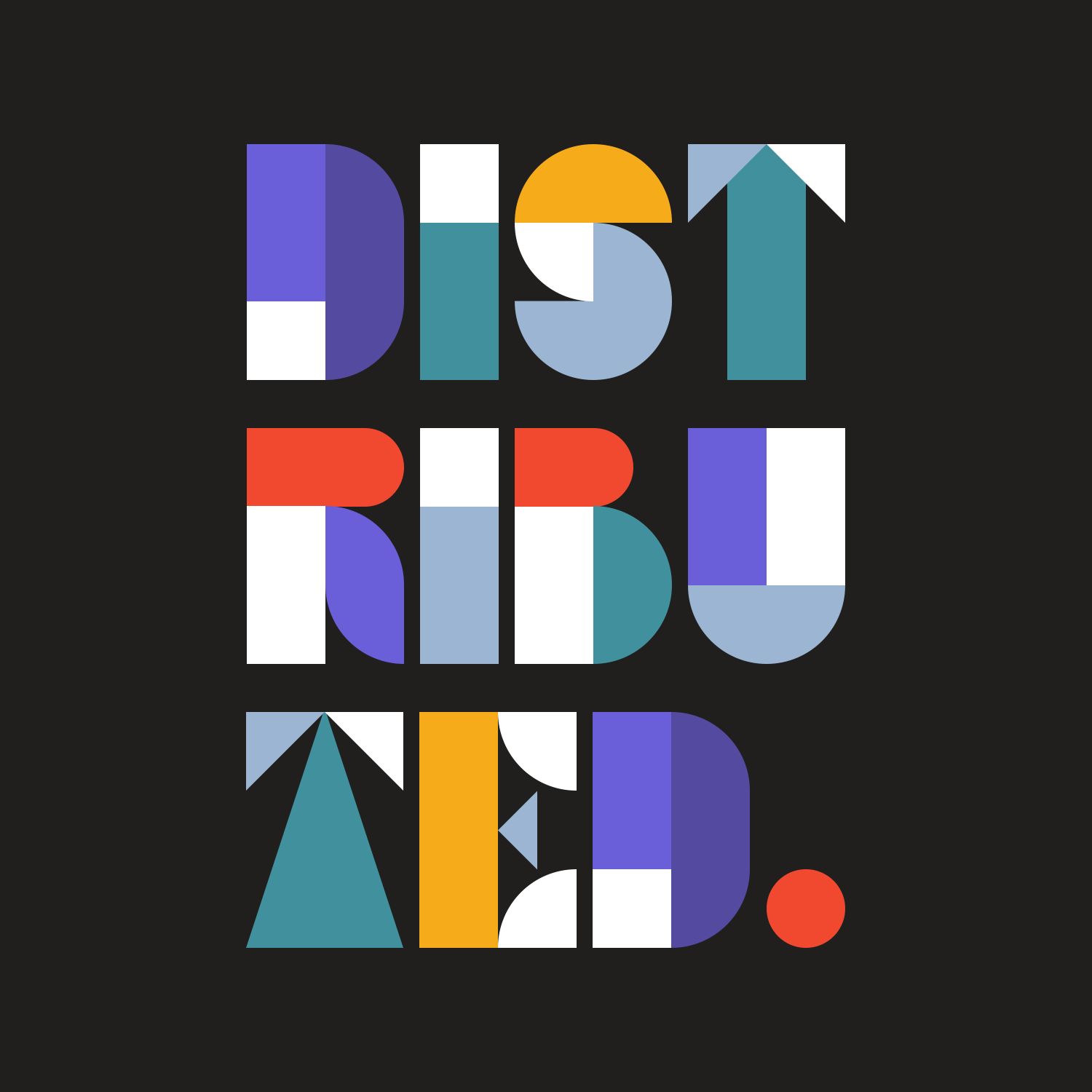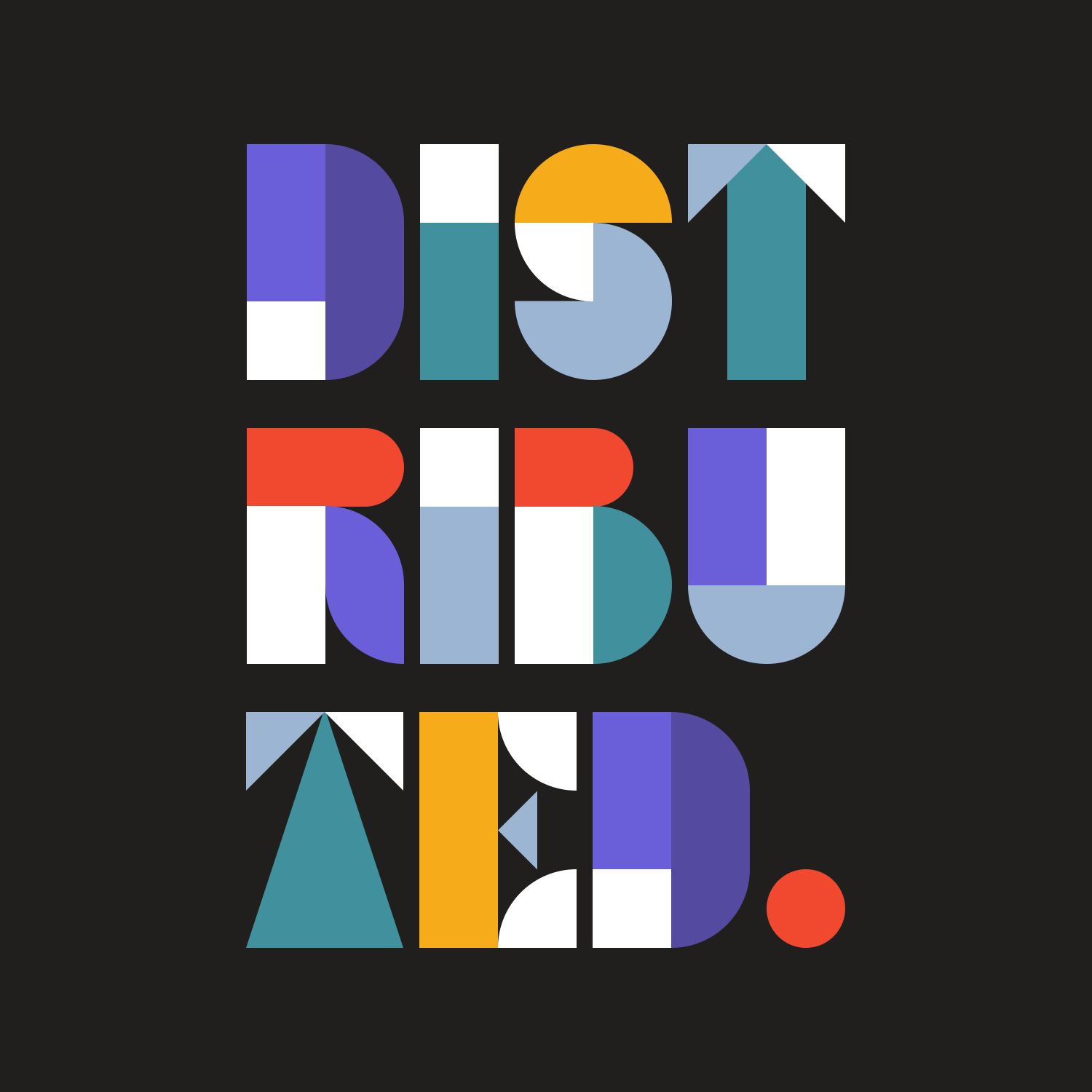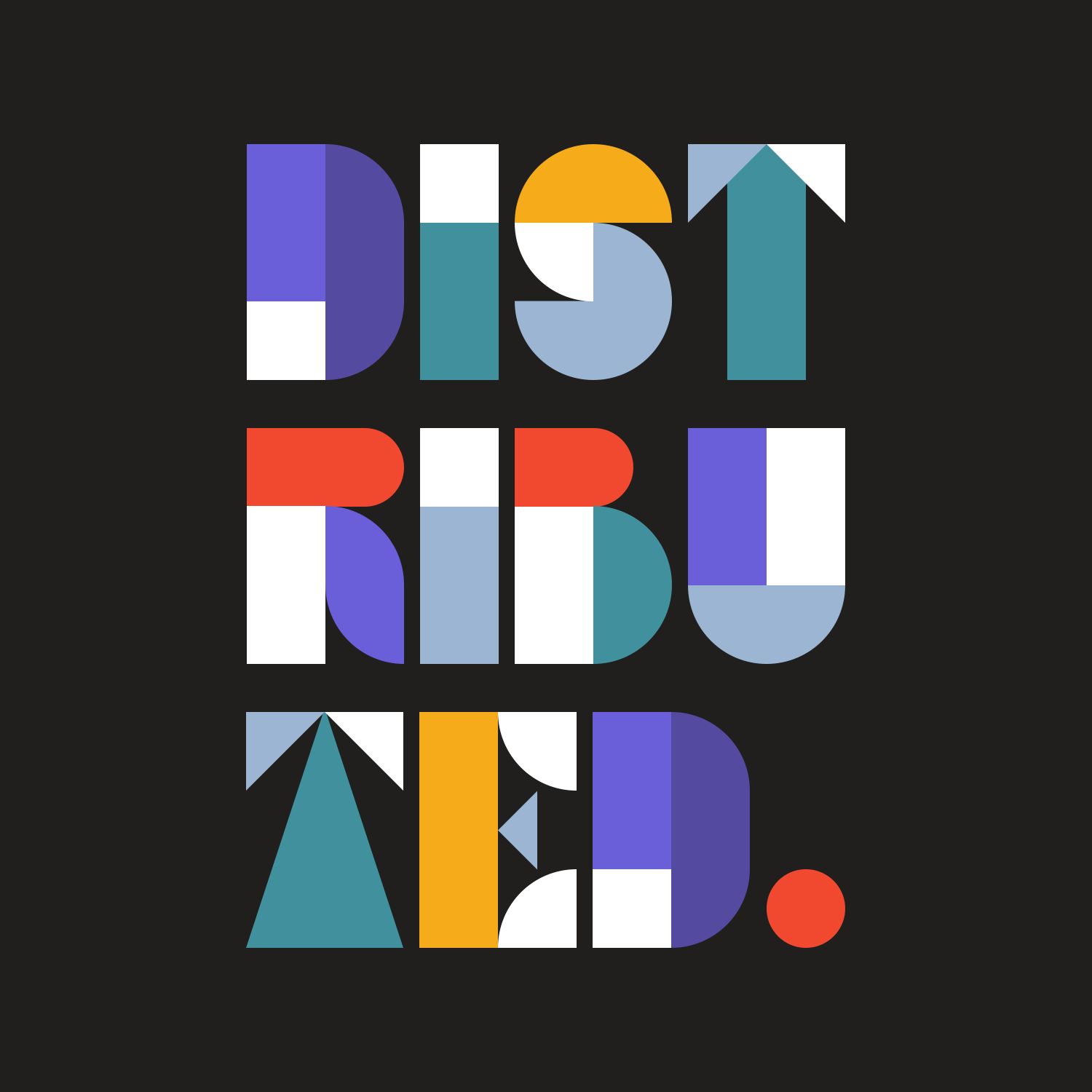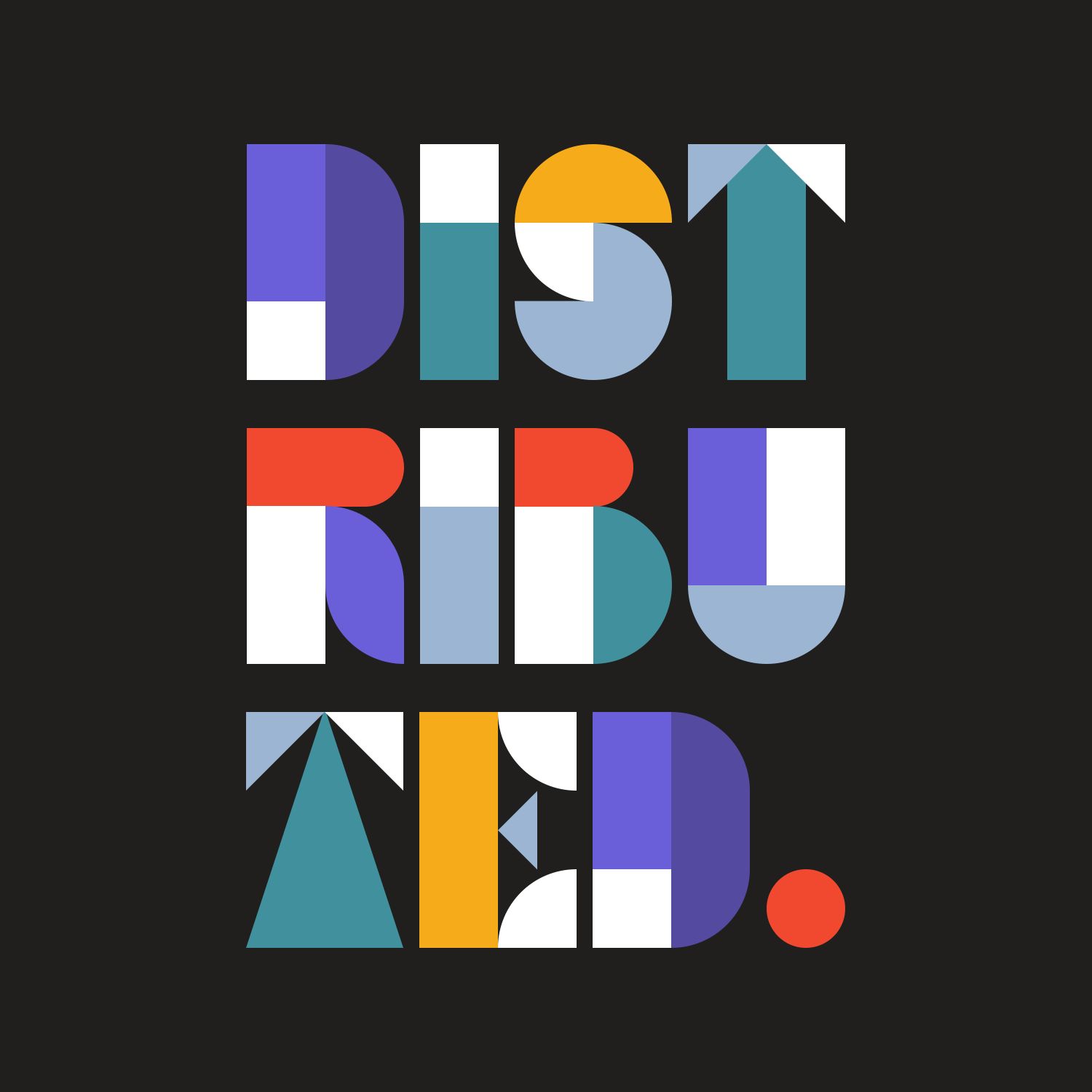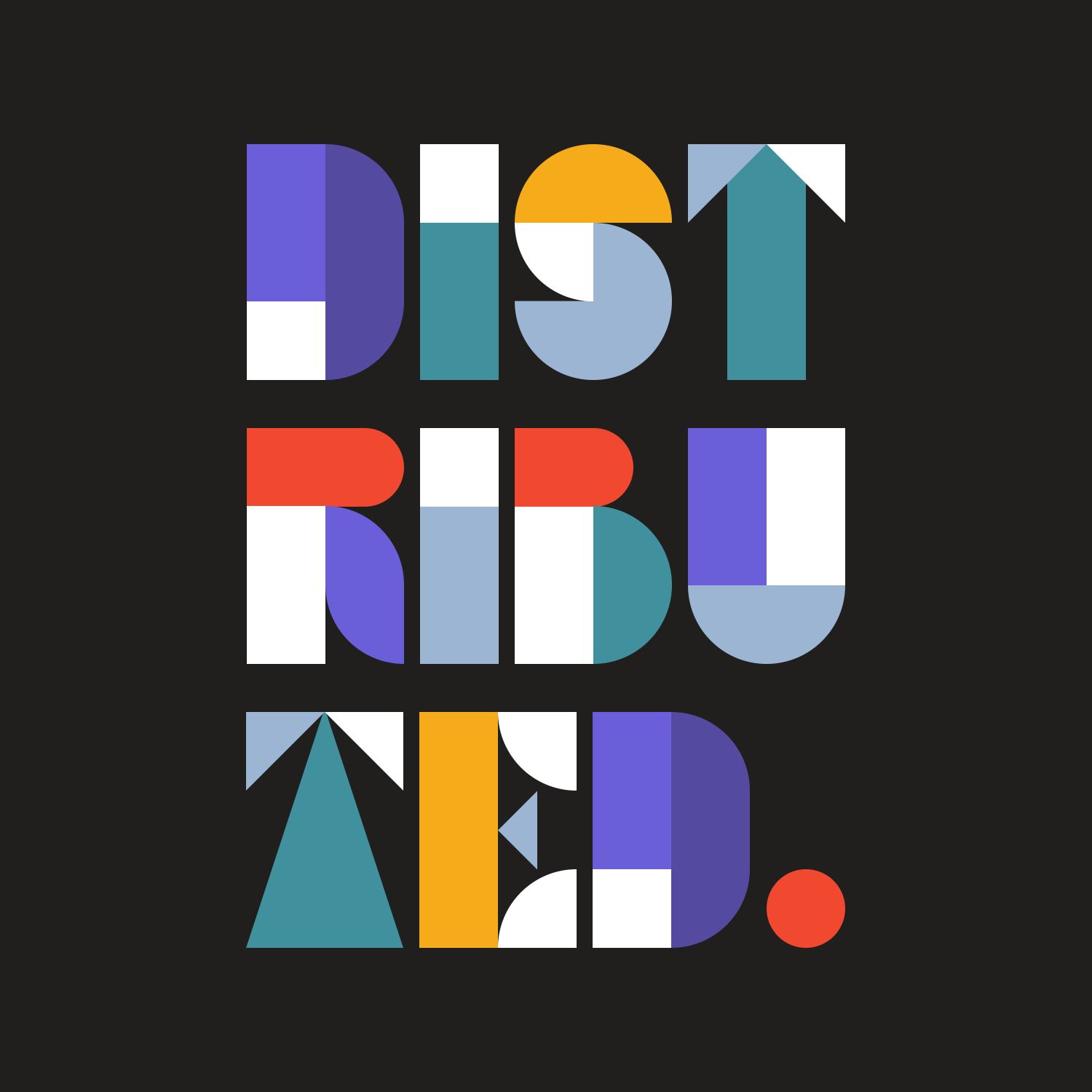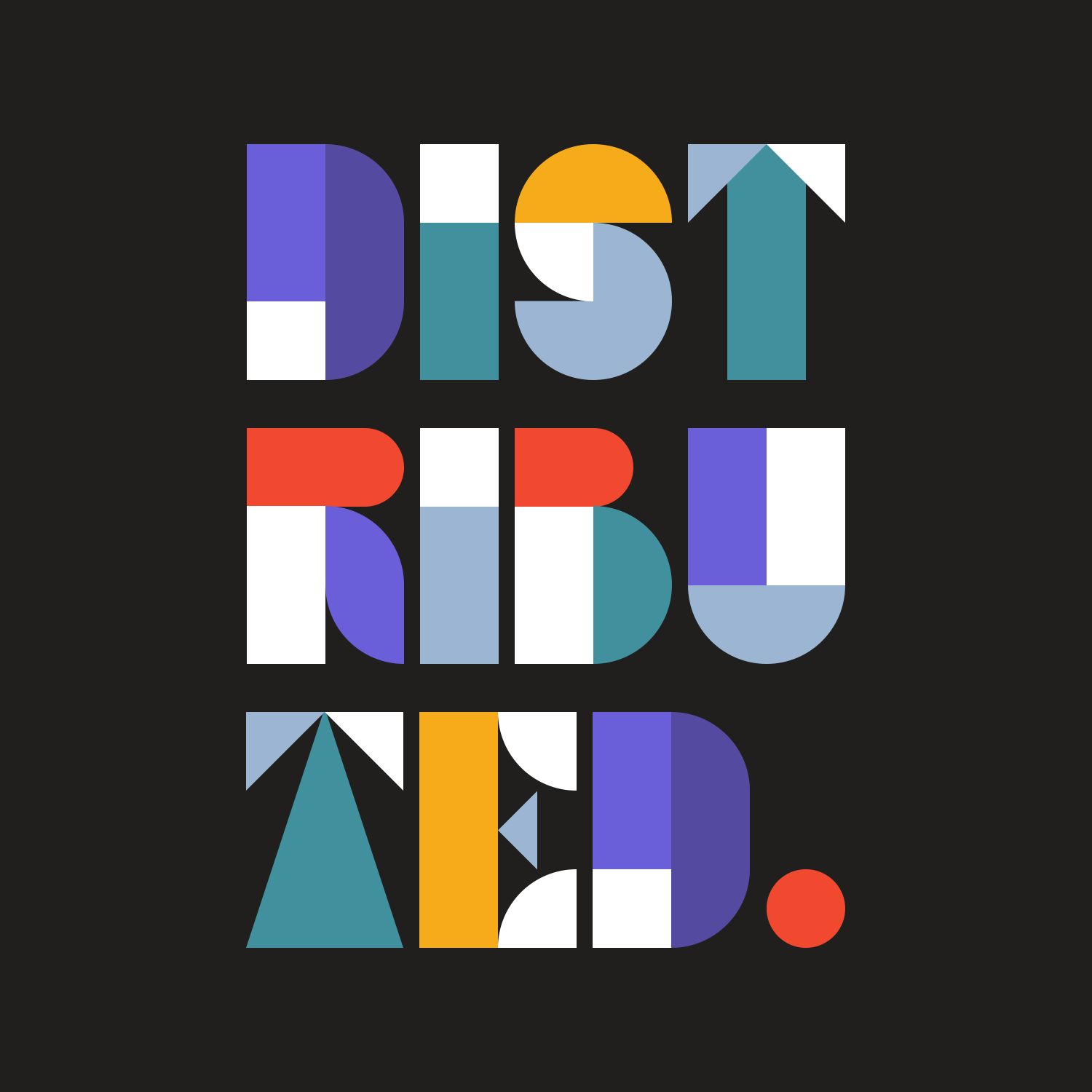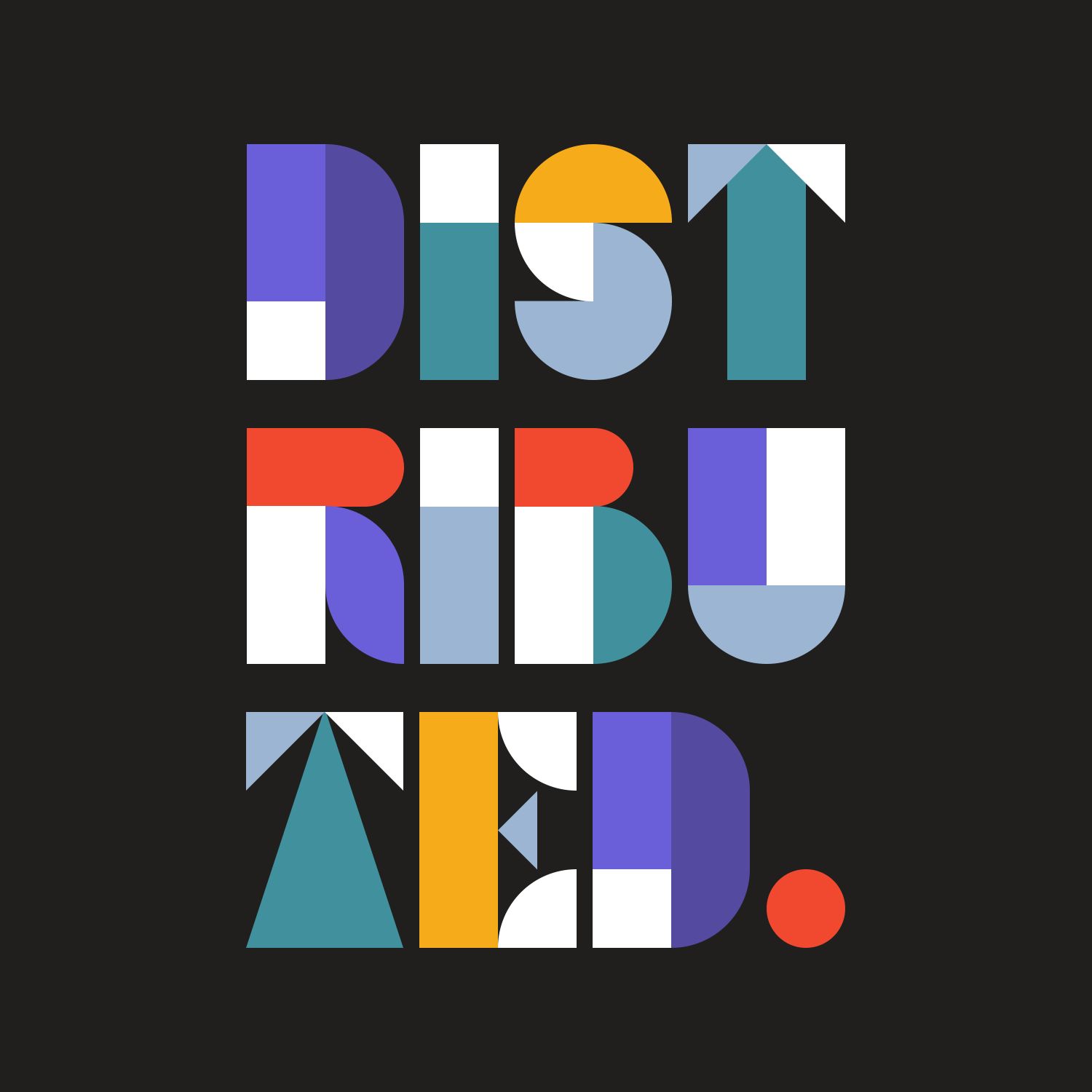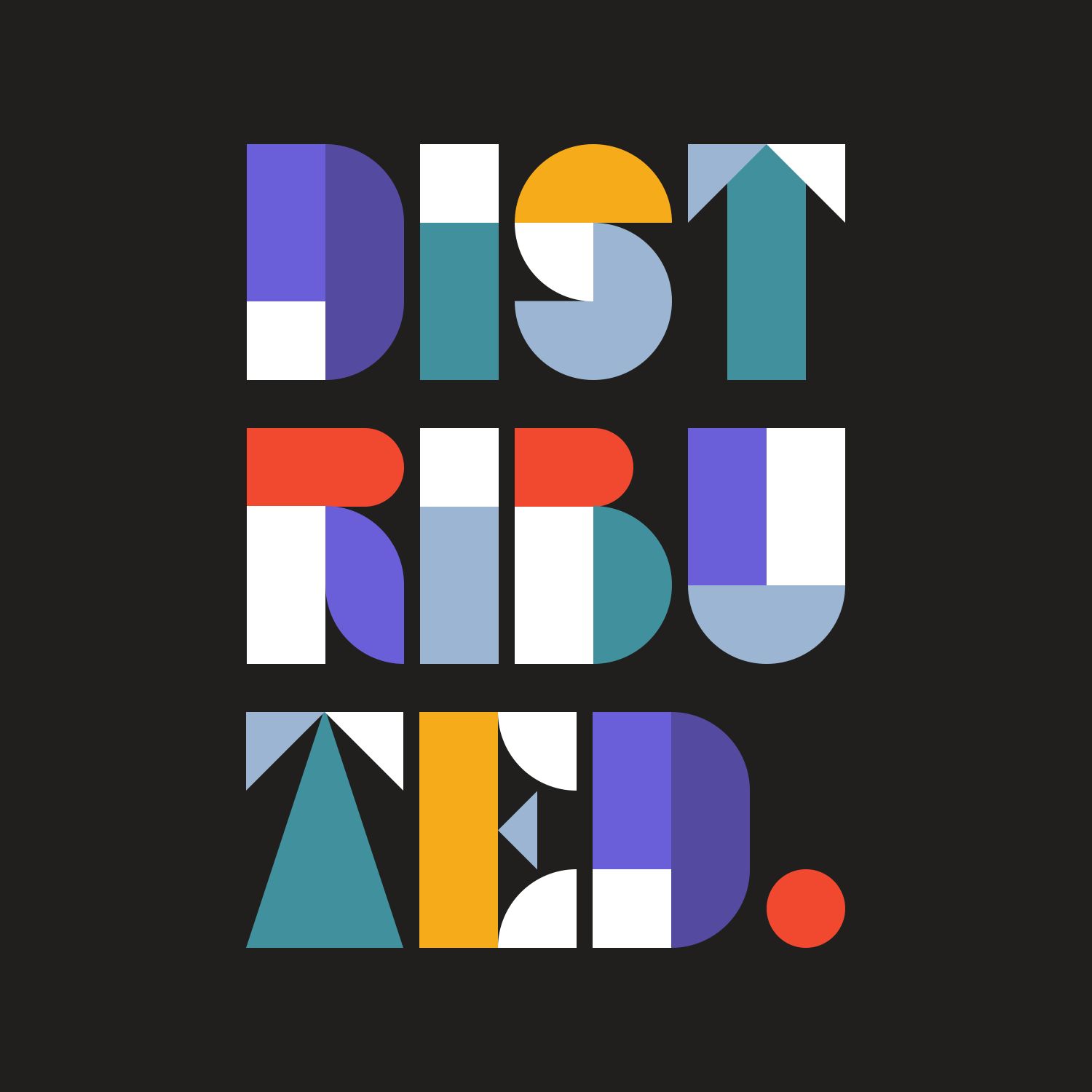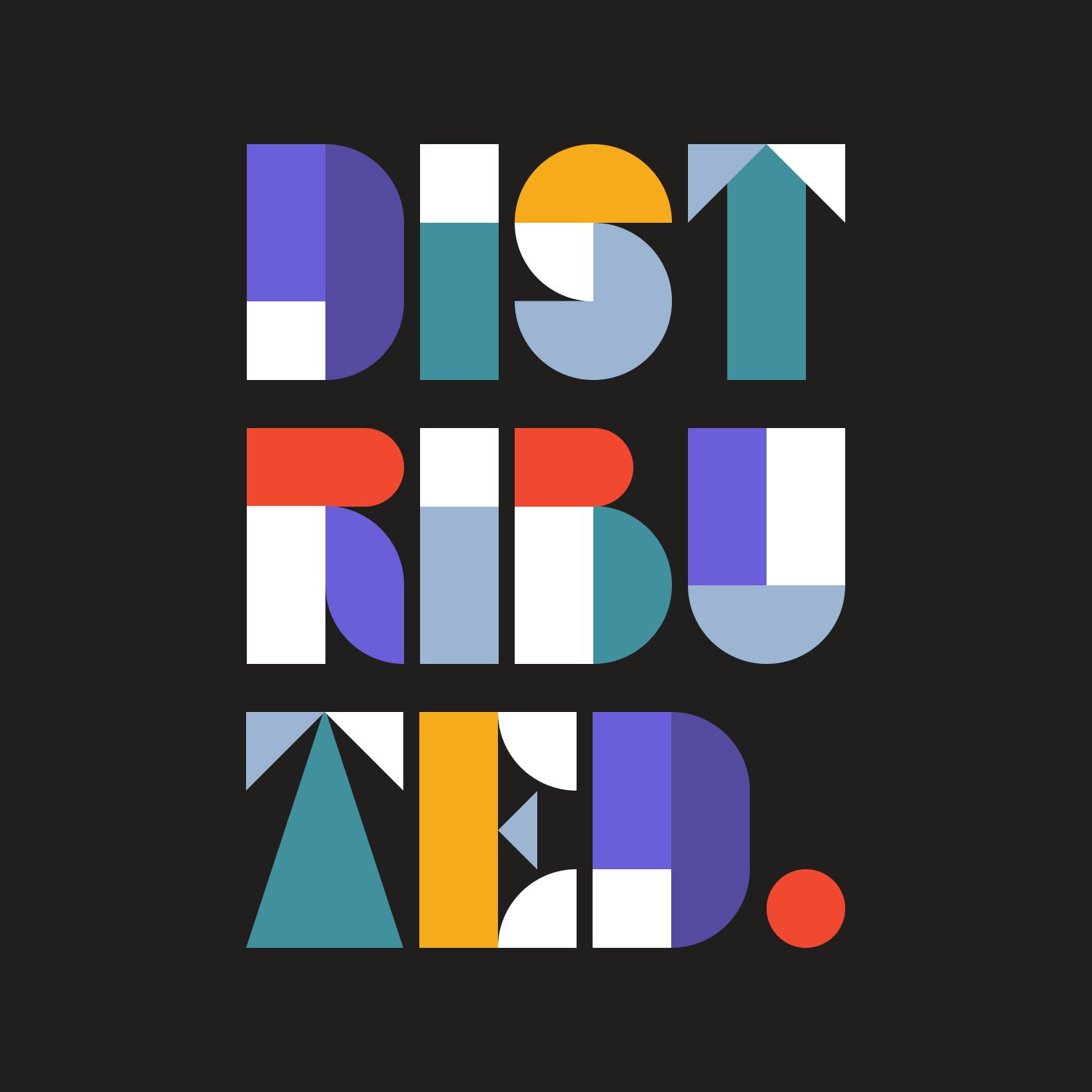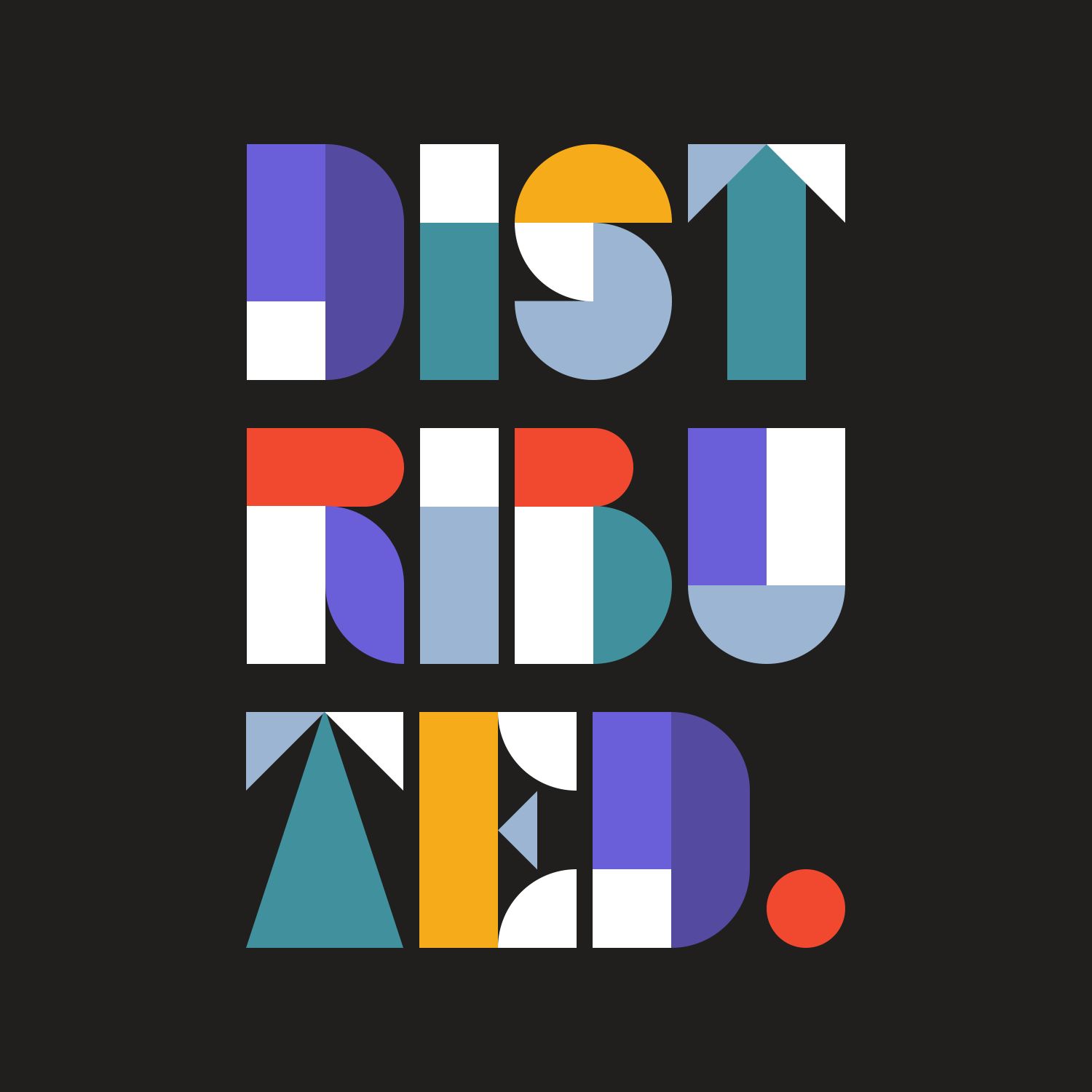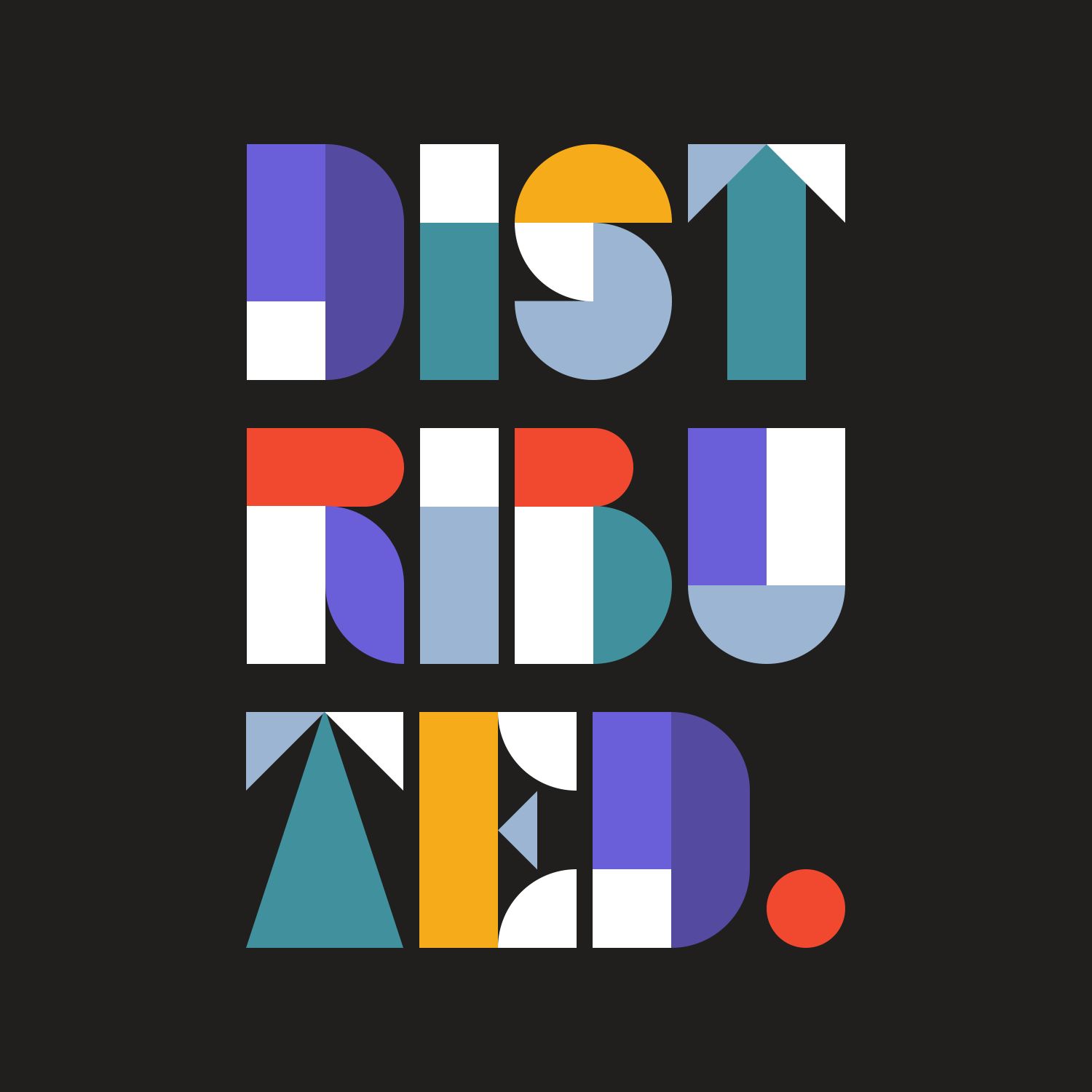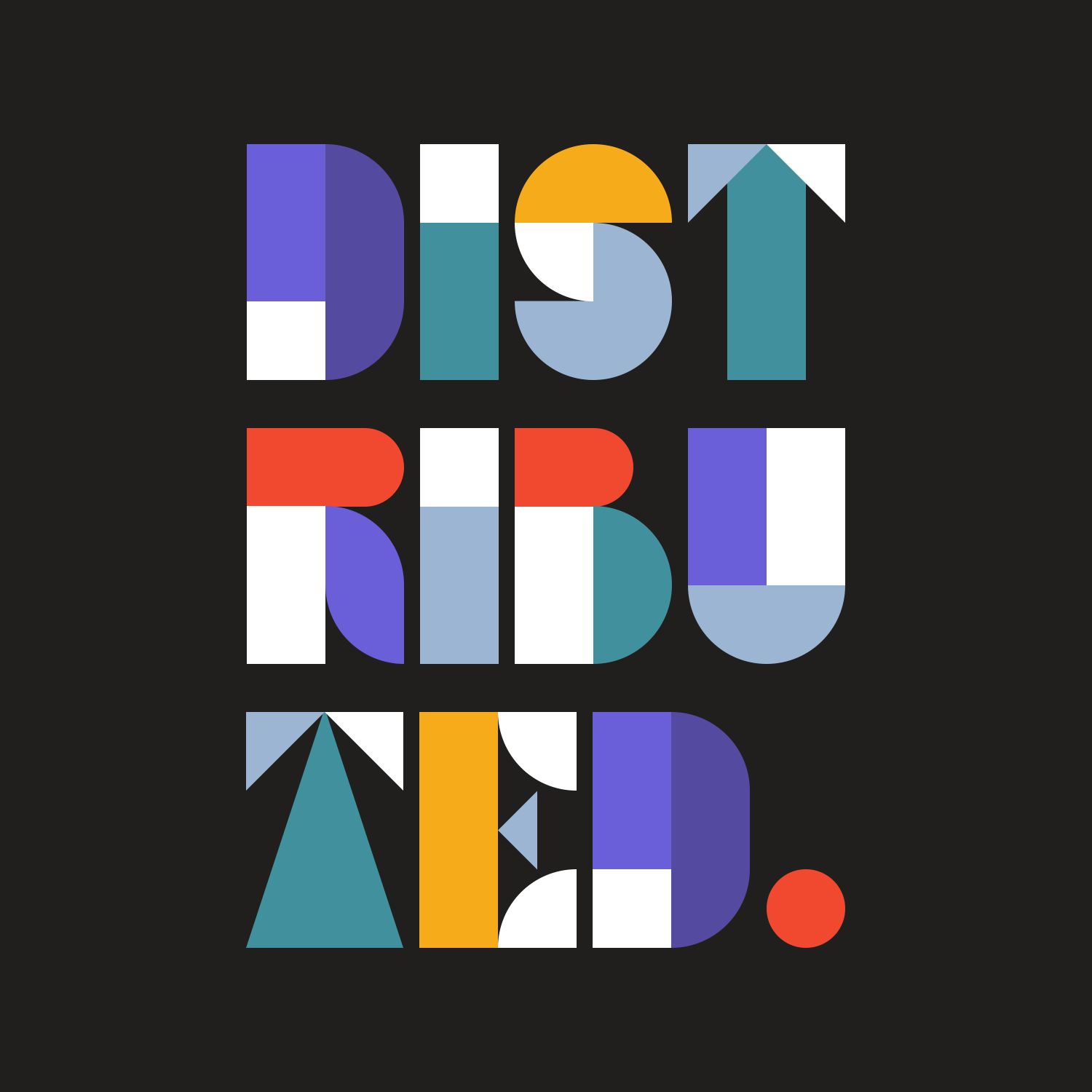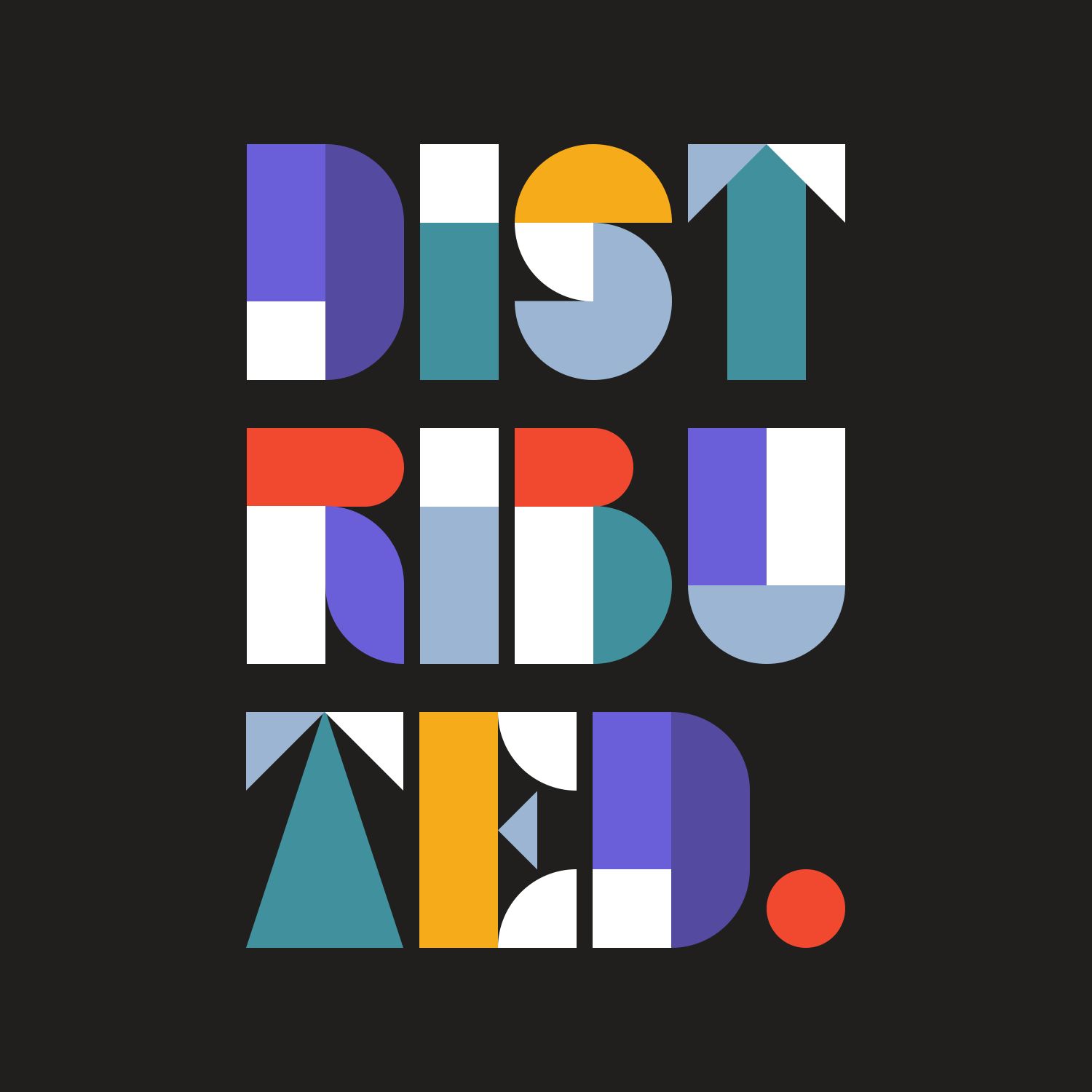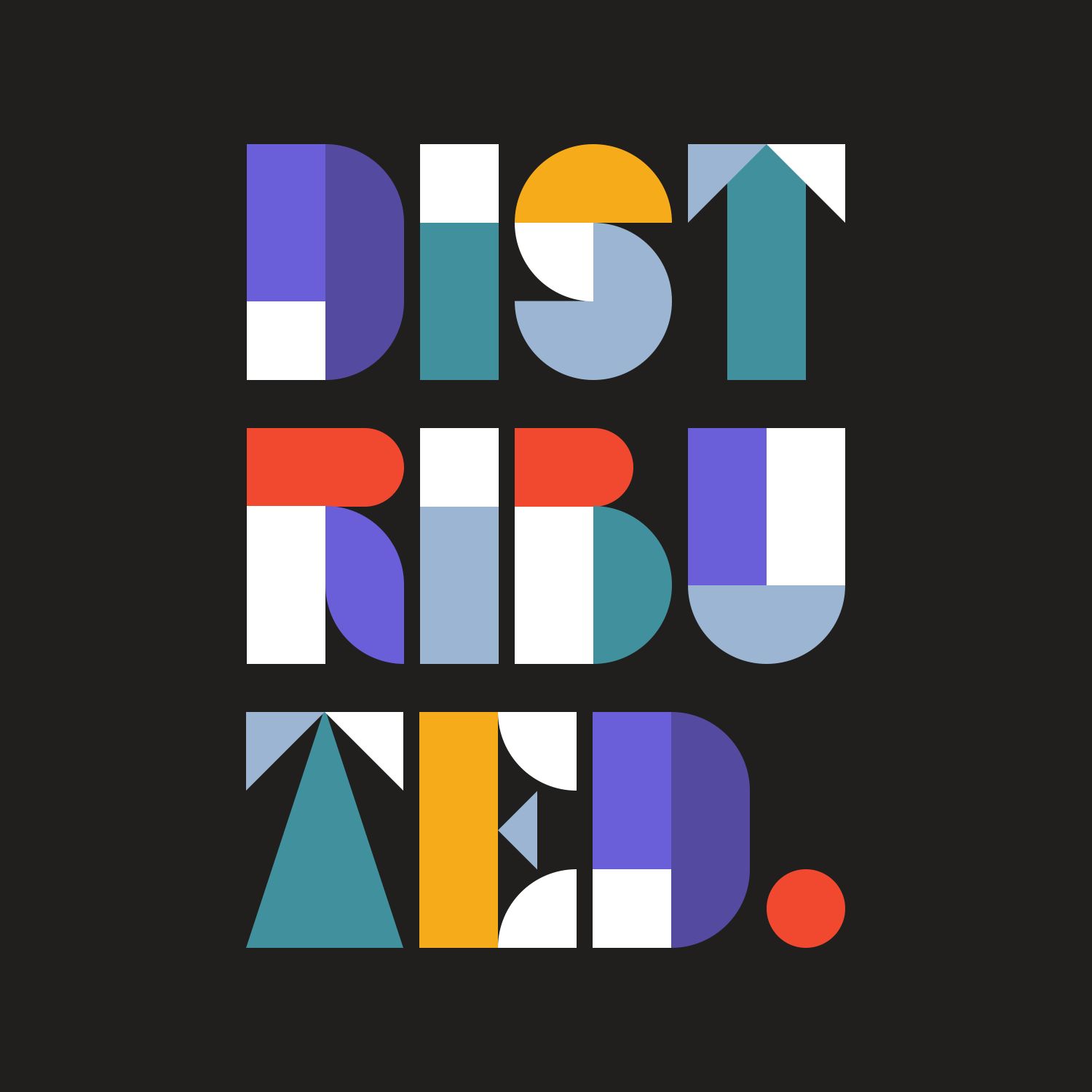Discover Distributed.
Distributed.

Distributed.
Author: Jack Hannah, Tuple
Subscribed: 7Played: 18Subscribe
Share
© Jack Hannah, Tuple
Description
Remote work is here to stay. Whether you’re firmly in the return to office camp or die hard distributed, the cat’s out of the bag for the industry.
The Distributed podcast, from Tuple, deconstructs how world-class engineers and their teams navigate the challenges (and opportunities) remote work creates.
Host Jack Hannah uncovers stories of teams and individuals overcoming technical challenges, working through interpersonal dynamics, and battling their own distractions.
Through these conversations, we’ll unpack the practical side of how folks work together in this new normal, and dig into the social emotional piece so often overlooked in programming.
The Distributed podcast, from Tuple, deconstructs how world-class engineers and their teams navigate the challenges (and opportunities) remote work creates.
Host Jack Hannah uncovers stories of teams and individuals overcoming technical challenges, working through interpersonal dynamics, and battling their own distractions.
Through these conversations, we’ll unpack the practical side of how folks work together in this new normal, and dig into the social emotional piece so often overlooked in programming.
37 Episodes
Reverse
On this episode of Distributed, host Jack Hannah sits down with Ivett Ördög, a 35-year software veteran and creator of Lean Developer Experience (aka Lean Poker), to talk about what it really takes for engineers to grow their impact. Ivett argues that communication, continuous delivery, and delivering value early are not soft add-ons but essential engineering skills that determine how far developers can go.Together, they break down how remote work can create better environments for deep focus and well-being, why strong communication skills often determine the jump from mid-level to staff, and how developers at any stage can begin practicing them. Ivett also shares when rewrites actually make sense, how to communicate them to management, and why continuous delivery gives teams the feedback they need to build the right thing.The episode offers clear, tactical guidance for any engineer looking to level up, advocate for better ways of working, and deliver value earlier and more often.—Where to find Ivett Ördög:• LinkedIn: https://www.linkedin.com/in/ivett-%C3%B6rd%C3%B6g-03aa9035/ • Website: https://www.ivettordog.com —Where to find Jack Hannah: • LinkedIn: https://www.linkedin.com/in/jack-hannah/• Website: https://tuple.app/—Timestamps:(00:00) Intro(01:17) The philosophy behind the Lean Developer Experience (02:24) Why Ivett now believes remote work produces better outcomes(06:45) Why people overlook the benefits of remote work(08:20) How remote work is customizable for needs and deep focus(11:48) Why communication is essential for developer career growth(14:52) Two communication struggles engineers face and how to begin improving(18:46) Where to find speaking opportunities (19:30) Tips for eager speakers with no stage experience(21:15) When rewrites make sense (28:14) How to communicate a rewrite to management(32:15) Ivett’s definition of continuous delivery (34:02) Examples of continuous delivery that show its value(36:54) How to drive change in a slow-moving organization(40:15) How Lean Developer Experience helps teams practice continuous delivery(42:45) The value of hands-on learning—Referenced:• Lean Developer Experience: https://www.ivettordog.com/leandeveloperexperience• Ted Talks: The Official TED Guide to Public Speaking: https://www.amazon.com/TED-Talks-Official-Public-Speaking/dp/1328710289• How to sell a big refactor or rewrite to the business? - Ivett Ördög - NDC Oslo 2025: https://www.youtube.com/watch?v=wdz90PQ2Ak4• Emily Bache’s Samman coaching website: https://sammancoaching.org• Jez Humble on LinkedIn: https://www.linkedin.com/in/jez-humble• Dave Farley’s Weblog: https://www.davefarley.net
In this episode of Distributed, host Jack Hannah talks with Jesse Wilson, a longtime open-source contributor and Cash App engineer, whose work underpins much of the Java and Android ecosystem. Jesse shares why some of the most rewarding engineering work comes from doing things the right way, even when it’s the hard way.Their conversation dives into the story behind Okio, the I/O library for Android, Java, and Kotlin that’s been downloaded >50 billion times, and what it revealed about craftsmanship, risk-taking, and building for the long term. They also unpack how remote teams can bring back the spark of in-person collaboration by pairing more often, embracing small interruptions, and using shared artifacts to stay aligned.—Where to find Jesse Wilson:• Mastodon: https://cosocial.ca/@jessewilson • LinkedIn: https://www.linkedin.com/in/swankjesse • Blog: https://publicobject.com—Where to find Jack Hannah: • LinkedIn: https://www.linkedin.com/in/jack-hannah/• Website: https://tuple.app/—Timestamps:(00:00) Intro(01:28) Why the quick and bad way is never the right choice(04:07) A story from Okio that shaped Jesse’s engineering philosophy(06:39) How company culture empowered Jesse to build Okio(08:46) The challenges of building Okio(12:40) Why Okio was worth building(15:08) The value of spontaneous collaboration and why interruptions can be good(21:10) Handling friction in distributed teams(27:32) The value of shared responsibilities and scheduled maintenance (31:05) How Jesse balances meetings with time for flow state(35:42) How a shared whiteboard or Google Doc keeps meetings on track (40:52) How shared artifacts guide meetings and make wrap-ups effortless(43:23) Rapid-fire round—Referenced:• Okio: https://square.github.io/okio/ • Writing Code That Lasts Forever: https://publicobject.com/2018/08/28/writing-code-that-lasts-forever• Todoist: https://www.todoist.com• inessential by Brent Simmons: https://inessential.com
As AI reshapes how software is built, what does it actually mean to be a good engineer? Chelsea Troy, who leads Machine Learning Operations at Mozilla and teaches computer science at the University of Chicago, argues that the future of engineering isn’t about typing faster but thinking better.In this episode of Distributed, Chelsea joins host Jack Hannah to unpack the three skillsets that matter most in the age of AI: investigative, evaluative, and innovative thinking. She explains why AI tools still fall short in areas that require human reasoning and judgment, how engineers can uplevel the skills that set them apart, and why collaboration and a solid grounding in computer science remain essential.—Where to find Chelsea Troy:• Website: https://chelseatroy.com• LinkedIn: https://www.linkedin.com/in/chelseatroy—Where to find Jack Hannah: • LinkedIn: https://www.linkedin.com/in/jack-hannah/• Website: https://tuple.app/—Timestamps:(00:00) Intro(01:08) The 3 most underrated skillsets engineers rely on every day(08:45) How an interpreter workshop and a Rust compiler project revealed AI’s limits(14:59) How to level up investigative, evaluative, and innovative skills(21:25) Why collaboration still matters but isn’t a new challenge created by AI(25:38) The value of early career pair programming and why it’s hard but worth it(29:09) Why pairing with an LLM has value but can’t replace human collaboration(34:33) Formal CS degrees vs. nontraditional paths and why studying CS still matters(43:49) Rapid fire round—Referenced:• What can we expect of LLMs as Software Engineers?: https://chelseatroy.com/2025/07/14/what-can-we-expect-of-llms-as-software-engineers• Bob Nystrom’s blog: https://journal.stuffwithstuff.com/• Tim Peters: https://github.com/tim-one • Crafting Interpreters: https://craftinginterpreters.com• Using the Python Interpreter: https://docs.python.org/3/tutorial/interpreter.html• Alan Turing: https://en.wikipedia.org/wiki/Alan_Turing• Ada Lovelace: https://en.wikipedia.org/wiki/Ada_Lovelace
Charity Majors is a writer, speaker, and the co-founder and CTO of Honeycomb, an observability platform for debugging and optimizing distributed systems.In this episode of Distributed, Jack Hannah talks with Charity about the realities of leading and scaling a distributed company. From why remote work is not best for every situation to the communication tax of distributed management, Charity shares what she has learned about building effective teams, fostering trust, and staying connected in a remote environment. She also reflects on her own leadership journey, from CEO back to CTO, and how greater self-awareness and empathy have shaped her approach to work and life.—Where to find Charity Majors:• Bluesky: https://bsky.app/profile/charity.wtf• LinkedIn: https://www.linkedin.com/in/charity-majors/• Website: https://charity.wtf/—Where to find Jack Hannah: • LinkedIn: https://www.linkedin.com/in/jack-hannah/• Website: https://tuple.app/—Timestamps:(00:00) Intro(01:15) Why remote work isn’t best for everything(03:20) What Charity learned from her viral Bluesky post on RTOs(08:33) Why distributed teams need more and better management(11:33) How to get the most from a remote work experience as an engineer (14:30) Why 10x engineers matter less than 10x teams(18:06) How trust and psychological safety drive high-performing teams(20:58) Signs of a healthy organization for job seekers(24:17) Charity’s transition from CEO to CTO and the challenges of down-leveling(26:31) When stepping back in your career can be the right move(30:44) How self-awareness transformed Charity’s approach to leadership and life(34:42) Rapid-fire round —Referenced:• Honeycomb: https://www.honeycomb.io/• Charity’s post on Bluesky about RTO policies: https://bsky.app/profile/charity.wtf/post/3lq4cgak3vk24• How 37signals handles communication, meetings, and setting work boundaries: https://tuple.app/distributed/How-37signals-handles-communication-meetings-and-setting-work-boundaries-with-Rosa-Gutierrez• In Praise of “Normal” Engineers: https://charity.wtf/2025/06/19/in-praise-of-normal-engineers/• Christine Yen on LinkedIn: https://www.linkedin.com/in/christineyen/• Simon Willison’s blog: https://simonwillison.net/• Dr. Cat Hicks' newsletter, Fight for the Human: https://www.fightforthehuman.com/
37signals embraced remote work long before it became mainstream. Its Shape Up framework helped define how remote product teams ship fast, but not every team inside the company follows the same playbook. In this episode of Distributed, host Jack Hannah sits down with Rosa Gutiérrez, Principal Programmer at 37signals and founding board member of the Ruby on Rails Foundation.Rosa takes us inside SEIP (Security, Infrastructure, and Performance), the team responsible for everything from privacy and legacy app maintenance to large-scale infrastructure moves, such as migrating 37signals off the cloud. She shares how a writing-first culture, asynchronous communication, and a flexible, reactive approach let her team thrive outside of the Shape Up model.—Where to find Rosa Gutiérrez:• Bluesky: https://bsky.app/profile/rosa.codes• LinkedIn: https://www.linkedin.com/in/rosagutierrezescudero/• Website: https://rosa.codes/—Where to find Jack Hannah: • LinkedIn: https://www.linkedin.com/in/jack-hannah/• Website: https://tuple.app/—Timestamps:(00:00) Intro(01:18) Rosa’s role at 37signals(04:10) How long-form writing is critical to 37signals’ culture(07:34) How Rosa adapted to 37signals’ asynchronous communication and unique work style(10:00) The benefits of asynchronous communication for focus, flexibility, and easy reference(12:08) Why 37signals suits introverts and how they handle in-person meetups(14:25) Why Shape Up doesn’t fit the kind of work Rosa’s team does(17:41) How Rosa’s team prioritizes incoming issues during on-call rotations(21:22) Why Rosa’s flexible work style makes her a perfect fit for SEIP’s reactive team(26:03) The challenge remote workers face in setting boundaries(27:46) A case for getting out of the house to create a better work-life balance—Referenced:• 37signals: https://37signals.com/• Hey: https://www.hey.com/• Basecamp: https://basecamp.com/• Ruby on Rails: https://rubyonrails.org/• Shape Up: https://basecamp.com/shapeup• Shape Up: Stop Running in Circles and Ship Work that Matters: https://basecamp-goods.com/products/shapeup
How do you keep a massive, distributed engineering organization with 80,000 employees aligned and actually understanding one another? In this episode of Distributed, host Jack Hannah sits down with Ian Varley, Principal Architect at Salesforce, to talk about how he helps their thousands of engineers across global teams stay informed and connected.Their conversation explores why clear communication is the backbone of great engineering, practical ways to disseminate knowledge across distributed teams, and how to use AI to make it all faster and easier. You’ll come away with tips you can use right away to break silos, build trust, and make information flow more smoothly in your own organization.—Where to find Ian Varley:• LinkedIn: https://www.linkedin.com/in/ianvarley/• Website: https://ianvarley.com/—Where to find Jack Hannah: • LinkedIn: https://www.linkedin.com/in/jack-hannah/• Website: https://tuple.app/—Timestamps:(00:00) Intro(01:11) What “borg up” means and why shared understanding matters(02:20) Practical techniques for using LLMs to communicate more clearly(05:25) Why you can’t just ask an LLM to write for you(06:45) How writing itself sharpens thinking and adds clarity(08:34) The risk of “enshittification” in communication and how to avoid it(09:38) Using LLMs as a true thought partner instead of a shortcut(10:55) Why investing in shared understanding pays off in the long run(16:55) Ian’s unique role at Salesforce as a knowledge sherpa(22:02) How Ian’s role evolved to Principal Architect with a focus on mentoring and educating(25:05) What Ian learned from blending engineering, infrastructure, and coordination on HBase(30:34) How Ian amplifies impact by enabling others to spread knowledge(33:30) How AI can make work easier(35:15) Co-Intelligence and the framing of AI as “alien intelligence”(36:56) Ian’s process for title generating with Claude(39:00) Closing thoughts—Referenced:• Salesforce: https://www.salesforce.com/• Haohan Wang’s post on X: https://x.com/HaohanWang/status/194741703347975783• How Staff Engineers approach leading remote teams with Cassia Scheffer: https://tuple.app/distributed/how-staff-engineers-approach-leading-remote-teams-with-cassia-scheffer-from-wealthsimple• Creating High-Performing Remote Engineering Teams with Carlos Rosão: https://tuple.app/distributed/creating-high-performing-remote-engineering-teams-with-carlos-rosao-from-newstore• 10 Principles for Architecture at Salesforce: https://engineering.salesforce.com/10-principles-for-architecture-at-salesforce-82105d5399a8/• Brad Arkin on LinkedIn: https://www.linkedin.com/in/brad-arkin/• Co-Intelligence: Living and Working with AI: https://www.amazon.com/Co-Intelligence-Living-Working-Ethan-Mollick/dp/059371671X
In this episode of Distributed, host Jack Hannah speaks with Jori Lallo, co-founder of Linear, to unpack how he and his co-founders shaped one of the most opinionated products in software. They discuss why the team built a product before a business, the principles behind the Linear Method, and how feedback and work trials define Linear’s culture.The conversation also explores the realities of running a team split across Europe and the U.S., the role of in-person meetups, and how AI is reshaping both Linear’s workflows and the future of collaboration.For anyone interested in remote work, intentional culture, and the next chapter of software building, this is a conversation worth hearing.—Where to find Jori Lallo:• X: https://x.com/jorilallo• LinkedIn: https://www.linkedin.com/in/jorilallo/—Where to find Jack Hannah: • LinkedIn: https://www.linkedin.com/in/jack-hannah/• Website: https://tuple.app/—Timestamps:(00:00) Intro(01:08) Why Linear’s founders built a product before a business(03:40) How the co-founders of Linear met(05:01) Shaping Linear’s opinionated philosophy and building tools for modern teams(09:40) Why the Linear Method still resonates today and where it needs a refresh(11:45) The role of feedback in Linear’s product culture(15:40) How Linear approaches hiring(18:05) The secret ingredient they look for when hiring(22:18) How Linear operates as a fully remote company (24:51) How Linear balances synchronous and asynchronous work across Europe and the U.S.(27:12) The importance of in-person meetups and social connection(29:38) How work trials act as a filter for alignment and fit(31:08) How AI is changing collaboration and work at Linear(37:31) Closing thoughts—Referenced:• Linear: https://linear.app/• Karri Saarinen on X: https://x.com/karrisaarinen/ • Tuomas Artman on X: https://x.com/artman • Y Combinator: https://www.ycombinator.com/• The Linear Method: Practices for building: https://linear.app/method• Why and how we do work trials at Linear: https://linear.app/now/why-and-how-we-do-work-trials-at-linear• The heirloom tomato org chart (Nan Yu, Head of Product, Linear): https://www.youtube.com/watch?v=I4vvBidQcck • Clerk Cofounder & CEO on how to build a company that delivers incredible DX: https://tuple.app/distributed/clerk-cofounder-and-ceo-on-how-to-build-a-company-that-delivers-incredible-dx
In this episode of the Distributed podcast, host Jack Hannah talks with Jeff Langr, a software coach, author, and longtime XP advocate. Jeff has helped teams across dozens of companies navigate Agile, pairing, and collaborative programming practices.Jack and Jeff dig into the surprising downsides of traditional agile software development and how mob programming offers a more inclusive and sustainable way to work. Jeff also shares what works (and doesn’t) about return-to-office efforts and why many organizations are failing to support effective remote collaboration.Highlights:The two rules for making mob programming effectiveRotations, engagement, and how to avoid team lead dominanceHow Jeff helped skeptics embrace mobbingIn this episode, we cover:(00:00) – Kicking things off with Jeff Langr(01:20) – Why mob programming beats solo and pair workflows(04:15) – Reducing work in progress to boost team flow(06:12) – The hidden time costs of traditional agile rituals(08:53) – What makes mob programming a bad choice(14:26) – How to keep everyone engaged (in-person vs remote)(18:35) – The two rules every mob team should follow(23:48) – Navigating fear and vulnerability in mobbing(24:26) – Turning a skeptic into a mob programming advocate(25:41) – Why return-to-office pushes often reflect leadership failureWhere to connect further:Connect with Jeff Langr on LinkedIn and his websiteFollow TupleWant to hear more? Check out distributed.fmConnect with Jack Hannah
In this episode of the Distributed podcast, host Jack Hannah sits down with Woody Zuill, the programmer, coach, and speaker best known for popularizing mob programming.Rather than rehashing the basics of mob programming, Woody talks about what it means to focus on effectiveness instead of productivity and what management gets all wrong. Woody shares insights from decades of experience coaching teams around the world and explains how to create environments that allow real collaboration to flourish.Highlights:The philosophy behind mob programming and software teamingWhy effectiveness matters more than productivityHow AI affects how teams collaborateIn this episode, we cover:(00:00) – Kicking things off with Woody Zuill(01:10) – The Robert Henri quote that frames Woody’s philosophy(03:16) – Letting teams self-organize and experiment with how they work freely(07:41) – Cutting a 500-bug backlog to 17 by working closely as a team(10:11) – Why separating teams by specialty fragments doesn’t work(12:22) – Productivity vs. effectiveness and who software is really for(14:55) – Figuring out what matters through doing, not managing(17:26) – Will AI replace teams or change how they collaborate?(19:12) – The role of AI in software development and teamwork(22:03) – Woody’s advice to new engineers and how to shape better workplacesReferencesJack’s favorite talk from Woody: Mob Programming: A Whole Team ApproachLean Software Development by Mary Poppendieck and Tom PoppendieckThe Art of Computer Programming by Donald KnuthThe 4 Stages of Psychological Safety by Timothy ClarkTeaming by Amy EdmondsonWhere to connect further:Connect with Woody Zuill on LinkedIn and on his websiteFollow TupleWant to hear more? Check out distributed.fmConnect with Jack Hannah
In this episode of Distributed, host Jack Hannah talks to Chris Lucian and Austin Chadwick, the creators of the Mob Mentality Show and longtime engineering leaders at Hunter Industries. Chris, Director of Global Software Development, and Austin, Distinguished Engineer, reflect on mob programming and how practices spread. They open up about what it takes to protect team culture while growing, discuss lessons from their 300+ videos on mob programming and agile, and how AI is just another member of the mob.Highlights:How mob programming went from one team’s experiment to org-wide practiceWhat Chris and Austin learned from publishing 300+ episodes on agile and XPHow AI fits into social coding and the future of pairing and mobbingIn this episode, we cover:(00:00) – Kicking things off with Chris Lucian and Austin Chadwick(01:52) – Rearranging cubicles to make pairing possible(03:09) – The first mob and why it worked(05:01) – Repairing a wonky relationship with the product owner(06:14) – Austin’s first mob and learning a new language on the fly(07:41) – The Mob Mentality Show origin story(09:22) – How Chris and Austin keep their episodes lean and sustainable(12:17) – Diffusion of innovation and spreading practices(15:18) – AI-generated code with domain languages(18:41) – Growing the mob through cellular division while keeping culture(24:49) – What to do when there are no internal XP mentors(28:12) – Using AI like another member of the mob(32:26) – Will AI replace pair and mob programming?ReferencesThe Mob Mentality ShowHuman & AI Collaboration in Mob Programming with Aaron Griffith and Parker BarrettWhere to connect further:Connect with Chris Lucian on LinkedInConnect with Austin Chadwick on LinkedIn Follow TupleWant to hear more? Check out distributed.fmConnect with Jack Hannah
In this episode of the Distributed podcast, host Jack Hannah is joined by Benji Weber, Cofounder & CTO at Geordie AI, to discuss leadership and autonomy in engineering teams. Benji shares his unique perspective on how managers can empower teams to take control of their work. They explore how the paradox of giving control plays out in practice and what it means for team ownership and performance.Highlights:- How managers can create environments that foster ownership- The challenges of balancing control with autonomy in fast-growing teams- How Benji empowers teams through curiosity and gentle nudging In this episode, we cover:(00:00) – Introduction to Benji Weber(01:23) – Benji’s take on professional pride and leadership(03:54) – Mindgard’s small team setup and remote-first approach(04:55) – Balancing in-person work with a remote-first culture(06:12) – The paradox of giving control to teams(07:07) – Coercion vs. nudging in leadership practices(08:39) – What it looks like to empower teams through curiosity(10:56) – Creating an environment for teams to own their work(14:17) – Tackling organizational reliability challenges with team autonomy(16:22) – Fostering agency in teams through self-discovery and retrospectives(18:15) – Why pair programming can be a powerful tool in small teams(23:46) – Approaching continuous integration and the value of real CI(26:43) – The trade-offs between consistency and flexibility in team practices(29:38) – Finding the right balance between synchronous and asynchronous work.Where to connect further:Connect with Benji Weber on LinkedIn (https://www.linkedin.com/in/benjiweber/) and on his website (https://benjiweber.co.uk/)Follow Tuple: https://x.com/tupleWant to hear more? Check out http://distributed.fmConnect with Jack Hannah: https://www.linkedin.com/in/jack-hannah/
How do you drive change in large engineering teams?In this episode of the Distributed podcast, host Jack Hannah talks with Ed Gibbs, Software Engineering Tech Lead at Cisco Meraki, about his journey from physics to software engineering and how he’s championed better development practices over the years. Ed shares insights on navigating remote work, driving incremental adoption of engineering improvements, and fostering collaboration in large-scale teams.Ed also discusses the role of experimentation in engineering culture, the benefits of meandering syncs over traditional standups, and the challenges of balancing refactoring with delivery in a complex codebase.Highlights:Why Ed Gibbs wears a fez every Friday and how it helps him succeedLessons from scaling change across 1,000+ dev organizationsThe engineering rituals that help his teams excel, like meandering syncs and mobbing MondaysIn this episode, we cover:(00:00) – Kicking things off with Ed Gibbs(01:03) – The origin story of Fez Friday and making remote work memorable(07:04) – Inside Ed’s fully remote team setup at Cisco Meraki(09:26) – The early days of TDD and what made it stick(12:04) – Introducing CI and getting buy-in for testing(17:16) – How to drive consensus across a 1000-engineer company(23:46) – Team habits Ed is proud of, from Kanban to mobbing Mondays(30:06) – What meandering syncs are and how they workReferences:Blog post on meandering syncs: Stand-Up Meetings Are Dead (and What to Do Instead)Where to connect further:Connect with Ed Gibbs on LinkedIn and his websiteFollow TupleWant to hear more? Check out distributed.fmConnect with Jack Hannah
On this episode of the Distributed podcast, host Jack Hannah talks with James Simone, Principal Engineer at Salesforce, about how he went from no development experience to principal engineer in 7 years at a Fortune 500 and the effects of collaborative programming. James shares what things are like inside the agile org at Salesforce and how they approach remote work, including how they prioritize reflection and team agreements to foster productive and happy work environments. Highlights:James's journey to principal engineer The role of reflection in boosting productivity and happinessSalesforce's approach to ensemble and pair programming In this episode, we cover:(00:00) – Kicking things off with James Simone(01:09) – The empowerment of distributed teams: fostering community and learning(03:08) – Inside Salesforce's agile organization: a structural overview(04:17) – Legacy projects and measuring developer happiness(06:07) – Applying metrics: individual and executive perspectives(08:52) – Collaborative programming: a measured approach(11:03) – Starting the week: Monday morning routines(12:56) – Code review: transitioning from author to reviewer(14:26) – The role of working agreements in team dynamics(17:05) – Reflection and improvement: the impact of test-driven development(22:36) – Documentation and decision-making in collaborative teams(27:48) – Balancing career growth with personal life passionsReferencesTest Driven Development: By Example by Kent BeckDomain Modeling Made Function by Scott WlaschinWhere to connect further:Connect with James Simone on LinkedIn and on his websiteFollow TupleWant to hear more? Check out distributed.fmConnect with Jack Hannah
In this episode of the Distributed podcast, host Jack Hannah sits down with Obie Fernandez, Principal Engineer at Shopify, 6x founder (including Andela and Hashrocket), and prolific author and musician. Obie reflects on his early role in the Ruby and Rails communities, what led him to shift away from Java, and how he uses and thinks about AI.Obie goes deep on how he and his team at Shopify uses AI, while touching on what this means for pair programming, mentorship, and the future of software development.Highlights:How Obie made Rails mainstream at ThoughtWorks and beyondHow Obie and Shopify use AIReflections on pair programming and the future of software developmentIn this episode, we cover:(00:00) – Opening the conversation with Obie Fernandez(01:59) – What made Ruby stand out after years of Java(07:45) – Driving Rails’ adoption at ThoughtWorks and shaking up the status quo(15:54) – How Shopify thinks about the developer experience(20:19) – Why every developer should experience pair programming(25:03) – How Obie uses AI(27:15) – The future of software development and collaboration(33:13) – When to stop vibe coding and prioritize quality(34:04) – Big P vs little p pair programmingReferences:Patterns of Application Development Using AIShopify CEO Tobi Lutke's now infamous AI memoWhere to connect further:Connect with Obie Fernandez on Instagram and obiefernandez.comFollow TupleWant to hear more? Check out distributed.fmConnect with Jack Hannah
In this episode of the Distributed podcast, host Jack Hannah chats with Thomas Paul Mann, cofounder and CEO of Raycast, the native productivity tool and extendable launcher. They cover how Raycast leverages community, ships such high quality product consistently, and approaches hiring. Jack actually spoke with Thomas the day after Raycast released their iOS app, so the episode starts with a pretty raw reflection on this major milestone before diving into the rest.Highlights:Thomas’s reaction to releasing iOSHow Raycast leverages community over dataWhat it takes to sustain Raycast’s biweekly shipping cadence and How dogfooding drives product polish and reliabilityIn this episode, we cover:(00:00) – Opening the conversation with Thomas Paul Mann(01:18) – Launching iOS with zero pre-hype(07:19) – Why iOS came before Windows(09:53) – Going remote during COVID(14:27) – Building an effective remote team(16:09) – Why 80% of Raycast is product(17:45) – Hiring in waves to avoid overgrowth(19:54) – The power of referral-based hiring(21:50) – How feedback beats metrics at Raycast(27:24) – Inside their biweekly shipping rhythm(32:55) – Using nightly builds to polish UXWhere to connect further:Connect with Thomas Paul Mann on XFollow Raycast on X or join the Slack communityFollow TupleWant to hear more? Check out distributed.fmConnect with Jack Hannah
How does the future hold for software development with remote collaboration?In this episode of the Distributed podcast, host Jack Hannah chats with Tim Ottinger, aka the Agile Otter, about how to manage and organize the work. Among other things, Tim is a Senior Consultant at Industrial Logic, contributor to the book Clean Code, and active presence online. Jack and Tim explore various ways to work in teams instead of solo and the various benefits they offer.Highlights:Rethinking solo work to boost first-time through rates and productivity Tim’s experiences with Extreme Programming and Agile Introducing swarm boards for better remote teamwork In this episode, we cover:(00:00) – Introduction to Tim Ottinger, Agile Otter(01:11) – Tim’s background and contributions to clean code and agile(01:46) – Early remote work and why covid changed remote training(04:03) – Benefits of spreading training over weeks vs. intense sessions(06:18) – What’s wrong with how most software teams manage work today(10:42) – The problems with solo work, parallelism, and utilization myths(14:14) – How AI can help coding but still has limitations(18:07) – Why increasing first time through rate is the key metric(24:18) – How to structure teams to avoid queues and handoffs with swarm boards(30:50) – Starting with small experiments to work together and improve flow(33:12) – Don’t lower the standards of the pipeline, raise the abilities of the team(40:07) – When it comes to remote work, longitude kills and latitude hurts(41:38) – Tim’s advice for making the most out of remote work(44:05) – The law of the 2nd floor(44:51) – Things can be better, don’t lose hopeReferencesSwarm Programming with the Swarm BoardClean Code by Robert C. MartinWhere to connect further:Connect with Tim Ottinger on LinkedIn and on his websiteConnect with Industrial LogicFollow TupleWant to hear more? Check out distributed.fmConnect with Jack Hannah
In this episode of Distributed, host Jack Hannah speaks with Emily Bache, a technical coach and the creator of Samman Coaching, about her work helping teams improve their development practices. Emily shares her experiences with test-driven development and refactoring, and explains how these practices can transform both code quality and team dynamics.Highlights:The impact of test-driven development on software qualityHow to introduce new practices in a resistant environmentWhy collaborative coding, like ensemble programming, accelerates team growthThe role of leadership in creating a culture of continuous learning and qualityIn this episode, we cover:(00:00) – Kicking things off with Emily Bache(01:25) – First experience with extreme programming in 2000(02:28) – Struggling to get a new team on board with XP(04:03) – Why TDD transformed Emily’s coding approach(05:22) – Becoming a full-time technical coach and YouTuber(06:48) – Defining what a technical coach actually does(07:21) – Inside a high-performing architecture team’s microservices shift(09:04) – Can siloed experts still outperform collaborative teams?(14:42) – Simple tactics to nudge your team toward better practices(20:57) – Ensemble programming explained: many minds, one keyboard(24:45) – Why refactoring skills matter in the age of AI assistantsReferencesApproval Tests and the weekly Approval Tests EnsembleChatGPT & Copilot are NOT Refactoring ToolsWhere to connect further:Connect with Emily Bache on LinkedIn and Samman Technical Coaching SocietyFollow TupleWant to hear more? Check out distributed.fmConnect with Jack Hannah
In this episode of the Distributed podcast, Jack Hannah sits down with Matt Wynne, staff software engineer at Mechanical Orchard and a longtime advocate for Agile and Behavior-Driven Development (BDD). Matt shares his journey from working with legacy systems to co-founding Cucumber Ltd., offering a firsthand look at how testing, pairing, and social programming create more effective teams.Matt also discusses the challenges of modernizing outdated infrastructure, the role of ensemble programming in fostering collective code ownership, and why strong relationships are essential for high-functioning distributed teams.Highlights:The power of social programming: how pairing and ensembling improve collaboration and knowledge-sharingThe evolution of BDD and its impact on software developmentStrategies for handling legacy modernization projects with minimal disruptionWhy creating psychological safety leads to stronger remote teams and better engineering outcomesThe future of automation, AI, and the next wave of innovationIn this episode, we cover:(00:00) - Kicking things off with Matt Wynne(00:13) - From COBOL to modernization: Lessons in legacy systems(05:05) - The origins of Cucumber and BDD(07:44) - Pairing, ensembling, and the power of social programming(11:38) - Extracting knowledge from aging codebases(14:07) - Building tools for faster legacy system migrations(21:01) - Creating psychological safety in engineering teams(29:19) - Selling change: How to introduce new development practices(33:02) - Remote work and the importance of human connectionReferencesWorking Effectively with Legacy Code by Michael FeathersAgile Coaching by Rachel Davies and Liz SedleyWhere to connect further:Connect with Matt Wynne on LinkedIn and his WebsiteFollow TupleWant to hear more? Check out distributed.fmConnect with Jack Hannah
In this latest episode of the Distributed podcast, host Jack Hannah interviews Colin Sidoti, Clerk Cofounder & CEO, to discuss what’s allowed them to grow so rapidly and deliver such an incredible developer experience for users. Colin reflects on how limited process fosters growth and allows his team of engineers and designers to excel.Colin also provides insight into the nontraditional ways Clerk streamlines work, including their hiring practices and unique team dynamics.Highlights:Understanding how Clerk has grown through a highly autonomous team cultureColin's insights on the importance of fluid communication in a distributed teamThe pivotal role the DX Guide plays in creating an amazing productEmpowering teams by trusting their instincts and encouraging adaptabilityIn this episode, we cover:(00:00) – Kicking things off with Colin Sidoti(03:26) – Product development at Clerk(08:29) – Remote work dynamics: synchronizing across time zones(12:54) – Importance of fluid communication: using Tuple for efficient syncs(14:44) – The role of DX Guide: maintaining high standards in product experience(22:28) – Building a culture of customer-centric development(17:40) – Evolving product offerings: from auth to billing and beyond(25:56) – Hiring for passion: finding team members who care deeply(31:55) – Simplifying user onboarding: eliminating friction for developers(33:34) – Impact of removing friction: boosting adoption with minimal stepsWhere to connect further:Connect with Colin Sidoti on X and ClerkFollow TupleWant to hear more? Check out distributed.fmConnect with Jack Hannah
Engineering teams whose work leaves an impact thrive on trust, collaboration, and the appropriate technical practices.In this episode of the Distributed podcast, host Jack Hannah sits down with Ryan Bergman, Principal Engineer at John Deere, to explore the impact of Extreme Programming (XP) and agile practices on software development. Ryan shares how XP principles helped stabilize a struggling startup, why pair programming is essential for team cohesion, and how behavior-driven development (BDD) builds confidence in large-scale systems.They also discuss the challenges of remote collaboration, lessons from scaling software at John Deere, and what it takes to align distributed teams around a shared technical vision.Highlights:Rescuing a struggling startup by embracing Extreme Programming to improve collaboration, code quality, and technical executionStrengthening engineering teams with pair programming and the right balance of structure and flexibilityManaging large-scale software development at John DeereBuilding trust across distributed teams through clear communication, shared technical vision, and an emphasis on psychological safetyUsing Behavior-Driven Development (BDD) to create reliable, well-tested systems that give teams confidence in their softwareIn this episode, we cover:(00:00) – Kicking Things Off with Ryan Bergman(01:10) – Ryan’s Journey: From Graphic Arts to Engineering(03:59) – Discovering XP: How Extreme Programming Saved a Startup(08:09) – Pair Programming and Agile Coaching: Rebuilding from the Ground Up(14:14) – Navigating Large-Scale Systems at John Deere(16:22) – The Power of Trust: Autonomy, Collaboration, and ‘Vampire Rules’(21:37) – Building Strong Engineering Teams Through Open Knowledge Sharing(26:49) – Pair Programming Pitfalls: Fixing What Doesn’t Work(37:11) – Behavior-Driven Development: Creating Confidence in Complex SystemsWhere to connect further:Connect with Ryan Bergman on LinkedIn and check out John DeereFollow TupleWant to hear more? Check out distributed.fmConnect with Jack Hannah


